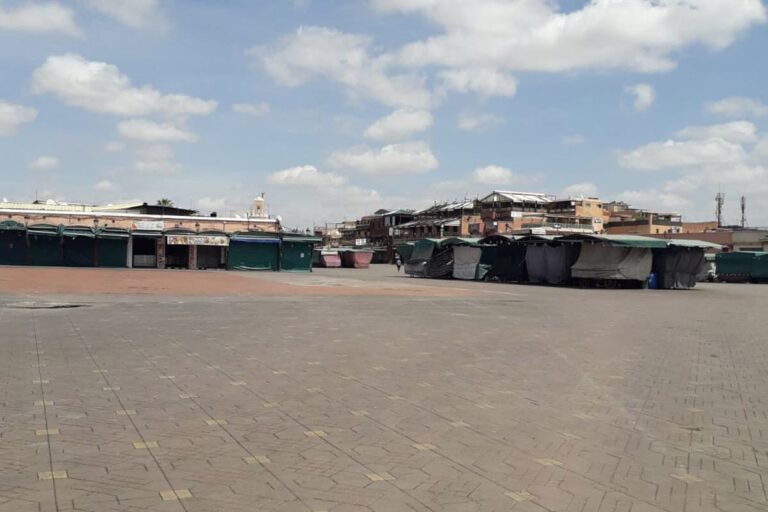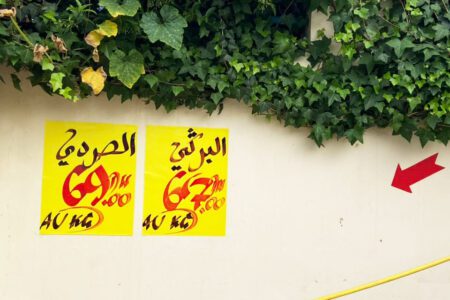This is a post that’s been hanging around in my drafts since October 2019. I’d already developed the reasons why, amha, a tourism project wasn’t the best way to set up in Morocco, I wanted to elaborate. But at the time, I had a lot of things to do, and I was also a bit fed up with getting slammed every time I said:
- Don’t invest in a riad in Marrakesh the property market is in crisis.
- don’t invest in a tourist project in Marrakesh or Agadir, there is already overcapacity there
- beware of tourism projects: tourism in Morocco is difficult and risky
With the pandemic, I thought about throwing my post in the bin, so obvious was it that these structural ‘threats’ had materialised, over and above the particular ‘coronavirus’ circumstance. And there were plenty of newspaper posts about it.
But no… Bernard and I continue to receive requests, and on Facebook I see lots of messages from people who want to believe (to reassure themselves) that everything will be sorted out in six months’ time.
Our experience in tourism
Bernard and I have a long experience in tourism, me with my husband's agency, he with a riad in the south, near Zagora. In fact, that’s how we met.
We both stopped working in this sector, for both personal and economic reasons. With my web agency, I designed websites for around thirty tourist operators in Morocco, including agencies, tourist transport companies and hotels.
We’ve made some of the same mistakes that we’d advise you to avoid, but that’s sharing experience too :) (and not many people do this type of feedback, on forums and social networks you can only find people who have done wonderfully well).
We know what we could have done better, but we both decided not to continue because we felt that the risk/reward ratio was too high for us, that we didn’t have the backbone to last two or three years in the event of a serious crisis, without doing anything else, and that, as long as we were doing ‘something else’, we might as well give it our all, 100%.
The weaknesses of Moroccan tourism are of two types: there are the external threats, which we can’t do much about, and the internal weaknesses, which Morocco is trying to improve with its succession of tourism plans, but against which the individual player can’t do much either (Ah the pleasure of the Swot…)
Global warming is the number one external threat
If you’re thinking that I’m yo-yoing, that this is fifty years away, or that you’re downright climate sceptics, you can skip ahead to the rest of the post… or go elsewhere to read people who will tell you that now is the time to invest in tourism.
Morocco, as a hot, coastal country with much of its land in desert or semi-desert areas, is particularly at risk.
The effects are already there
The drought is getting longer and more frequent. Morocco is doing what it can to combat water stress, with dams and a desalination plant project, but in the meantime, it’s hot, very hot, more and more often. This year has been strange. During Ramadan, on the other hand, it was pleasantly cool, with a little rain, but in recent days the heat has returned. Overall, like everywhere else in the world, temperatures are rising in Morocco.
And in a hot country, you can quickly reach unbearable temperatures!
We have started to introduce measures to combat the drought, such as banning watering at certain times. The day will come when we’ll have to face up to the problem of swimming pools.
The sustainability of Morocco’s coastline
Here, we have a lot of rocky coasts, with cliffs of varying heights, but we also have a lot of very flat coasts. I remember a district of El Jadida, built below sea level, where the road runs alongside the beach, at beach level, and on the other side of the road, you can see land that is much lower, at sea level, and then a whole district. If the sea level rises, this neighbourhood could quickly find itself with its feet in the water.
It’s the same for Agadir, rebuilt at the bottom of Founty hill after the great earthquake, or even a large part of Casablanca. In France, England, America, buildings built too close to the beach have had to be abandoned since 2013.
The “shame of flying”
The “shame of flying” is a Swedish word, flygskam, and a movement that seeks to limit air travel. While the world of tourism and aviation considers that it has had no impact in 2019, it remains a threat in the medium term. Morocco is heavily dependent on air travel, and anything that affects air travel affects Moroccan tourism.
In addition to the “shame of flying”, I believe there will also be the “fear of flying” for all those who have found themselves stuck in Moroccan airports with no way of returning. Or those who had problems following the bankruptcy of Thomas Cook…
Second external threat: terrorism
In Morocco: 24 August 1994 in Marrakesh (Asni hotel), 16 May 2003 in Casablanca (Casa de España), 28 April 2011 in Marrakesh (Argana café), 17 December 2018 in the High Atlas (murder of two Scandinavian tourists).
Elsewhere in the Maghreb: 17 November 1997 in Luxor, 11 April 2002 in Djerba, 23 July 2005 in Sharm El-Sheikh, April and December 2007 in Algiers, 24 September 2014, murder of Hervé Gourdel in Kabylia, 18 March 2015 in the Bardo in Tunis, 26 June 2015 in Sousse in Tunisia, December 2018 and May 2018 in Giza.
Each time, even if it was “far away”, tourist numbers in Morocco fell, for varying lengths of time and to varying degrees. I spent a lot of time explaining (what I sincerely thought) that if you followed the basic rules, there were no more risks in Morocco than elsewhere, that the area of south-east Morocco, where we were working, was not dangerous, but I couldn’t go any further than sharing my feelings.
The fact is: when there’s an Islamist attack somewhere in North Africa or in France, tourist numbers drop in Morocco. And even if you’re as safe in Morocco as you are in France, you can’t blame people for not wanting to go on holiday when they’re stressed by fear.
Third: the economic crisis
From 2008 to mid-2010, we were hit by the subprime crisis and the financial crisis that followed.
A friend of mine, who ran an events agency in Paris, saw her annual sales plummet by 40% in three weeks.
The consequences for Moroccan tourism were immediate:
- cancellation of a number of bookings (my friend, for example, had three incentives planned in Marrakesh which were cancelled)
- a huge increase in payment deadlines for European contractors (and we’re sitting tight waiting for that to happen, because it’s better than nothing)
- a drop in direct passenger numbers, which is normal: people had less money, so they travelled less.
The two sectors that fared best at the time were very upmarket tourism and backpacker style.
Today the world is facing an economic crisis without recent precedent, and I think that local tourism will suffer enormously, even more than in other countries. That’s for tomorrow, with the analysis of internal weaknesses!
 A typo or syntax error? You can select the text and hit Ctrl+Enter to send us a message. Thank you! If this post interested you, maybe you can also leave a comment. We'd love to exchange with you !
A typo or syntax error? You can select the text and hit Ctrl+Enter to send us a message. Thank you! If this post interested you, maybe you can also leave a comment. We'd love to exchange with you !




